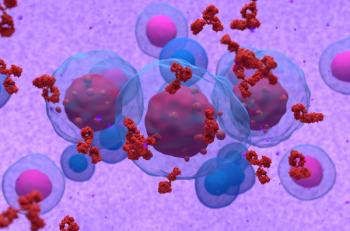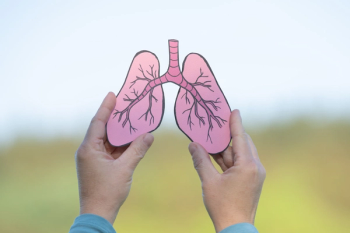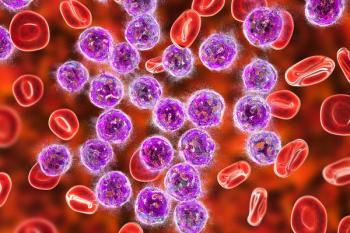Pharmacy Times® interviewed Allison Adekanye, PharmD, and Fallon Henkel, PharmD, BCOP, pediatric oncology pharmacists at Yale New Haven Health, about the advancements and challenges when treating childhood cancers. Both Adekanye and Henkel acknowledged the overall improvements in pediatric cancers, less common cancers have seen little progress. Early detection is difficult, they note, because of limited screening tools, but genetic syndromes or family history can help identify children who are at a higher risk. Adekanye and Henkel stressed the pharmacist’s importance when supporting families, helping patients with their adverse effects, and helping them navigate treatments.
Pharmacy Times: Can you provide an overview of the current state of pediatric oncology and what cancers most commonly affect children?
Allison Adekanye, PharmD: After unintentional accidents, cancer is actually the second leading cause of death in children ages 1 to 14—which I don't think a lot of people think about or realize—but about 1000 children a year under the age of 15, will probably pass away from a childhood cancer, and about 16,000 are diagnosed age 0 to 19 annually...but the good news is that the cancer death rate has actually declined by more than half from 1970 to 2021, and that's good for both children and adolescents, that that death toll has gone down, and it's largely doing improvements to treatment and high participation in clinical trials. We're going to talk a lot about Children's Oncology Group (COG), which is the large, international sort of consortium of pediatric oncology providers that runs the majority of trials in pediatric oncology, and most [National Cancer Institute]-accredited institutions are COG-affiliated. And I would say—I think—over 90% of children diagnosed with cancer are actually treated at a COG-affiliated center, or a COG sort of trial.
The most common types of cancer in kids age 0 to 14 is leukemia—so that's [acute lymphoblastic leukemia] (ALL), [acute myeloid leukemia] (AML), T-cell [leukemias]—then [central nervous system] tumors and malignancies, followed by lymphomas. The most common types of pediatric cancer have had exponential increases in survival; however, the less common types have really made very little progress in the past 50 years. In ALL specifically...the survival rate was less than 10% in the 1960s, and today, after the last update of the most current COG pediatric leukemia trial, overall survival is at 98% which is pretty fantastic. So, that's sort of where we are.
Pharmacy Times: What are some challenges when diagnosing children with cancer and how might early detection be improved?
Fallon Henkel, PharmD, BCOP: The 1 type of cancer that is [present in] a very small number of patients, but retinoblastoma is an eye tumor in pediatric patients, and it's really family history linked, so patients don't even realize that...if they have it in their family history, we'll know to look for it more, but patients that don't have it in their family history don't realize they're getting screened, even at their general pediatrician exams as babies. When the doctors are looking in their eyes, they're also screening for retinoblastoma, but that's just such a small portion of our patients. So overall, there's really not great screening tools right now.
Adekanye: There are certain disease states or syndromes in pediatrics that make somebody susceptible to getting cancer. [For example,] WAGR syndrome is heavily related with Wilms tumor and Li-Fraumeni syndrome is related to many types of malignancies. So, patients that are identified with those disease states can be screened because we know that they're at a high risk of getting certain cancers, but the general public, really, there's not a space for that.
Pharmacy Times: What is taken into consideration when creating a treatment plan/regimen for a pediatric patient?
Adekanye: Would it differ from the adult patient in terms of if they're being treated as a pediatric cancer? No, age doesn't really matter in the majority of pediatric cases.
The biggest thing, I mentioned COG before...all of our standards of care are based off of the last published trial and the result of that trial. So, every disease state has its own subsection in COG, and that sort of really follows how we are going to do treatment up front. So, if we have an open study, obviously we would like everybody to enroll in the open studies, and I think also it's important to know it's not a study [in which] we're investigating or trying a new drug on a child, we're not testing on a child. Basically, what that means is that we're taking the standard of care that we know has maybe 90% effectiveness in treating this cancer, and we're making 1 tiny, or maybe 2 tiny changes to that...[as an example,] in ALL, we're actually taking some of the drug away to make it less toxic because we're so good at curing it, or we might trial a new drug that targets a specific gene or something for that cancer. So, I think that's important to know, is that just because they're on trial, doesn't mean that they're getting something really different per se, they're still getting the standard of care just with something additional. And it's important that they both enroll, whether you're getting standard of care or not, because that data can really help us learn more for the future. So, I really think that that's sort of the biggest thing that's taken into consideration. Knowing the research and knowing the results of the last trial...all of our providers, they attend national meetings and they're affiliated with the COG meetings—and we are too, as pharmacists—so that we are all up to date on what is going on nationally and what everybody else in other institutions are doing and accepting as their standard of care as well.
The other thing that I wanted to make a note of was that if somebody is not on study—so, they choose not to enroll in study, which is fine, or maybe there isn't a study open at that time, like right now, we don't actually have any open leukemia studies, so everybody would be "off study"—we still treat every single patient as if they were on study. So, the only difference is, perhaps if there were certain labs that were going to be sent out to a different institution, we don't send those, but every child is treated the same or with the standard of care arm of that study. I think that's important to understand.
Pharmacy Times: How might pharmacists help caregivers and patients navigate their treatments? How does this compare to adult patients?
Henkel: So, these COG trials can be up to 600 pages long. While yes, we're definitely helping the families navigate through the different phases of therapy—which are very well-organized in these trials—we're also helping the team, the physicians and nurses, navigate through all these pages of drug information. We really are the drug experts, and we really take pride in making sure we understand the layout of the trial, all the different sections, so that when we're rounding with the family, and if, [for example,] the mom says the patient is having diarrhea, or nausea—or whatever [adverse] effect (AE) they're having—we're so familiar with that trial that we can easily help as best we can to try to alleviate some of those AEs. We also try to help prepare them for what's coming up next, so if they're inpatient for a certain amount of time, we help figure out when they need to come back for another admission or when they need to follow up in clinic, and then we can check in with them there if they're having AEs or see how their therapy is going.
But overall, the pharmacists are really [an] important role in terms of knowing how these trials are set up, so that we can make sure we are following them appropriately and making sure families understand what's going on.
Pharmacy Times: You previously discussed that the pediatric sarcoma space is behind the adult population regarding treatments, trials, etc. Can the same be said for oncology in general?
Adekanye: It's hard to speak about it and not delineate from different disease states, because...I mean, our number 1 overwhelming incidence of cancer is leukemia. And we're great at treating leukemia, and so good in the fact that adults are modeling off of our protocols, because kids can get a lot more treatment, heavier treatment, more toxic treatment than adults can sometimes handle. So, adults are sort of trying to model after us and see what they can [do to] push the envelope on with the adults. In fact, even something like [chimeric antigen receptor] (CAR) T therapy—which the FDA approved in 2017 a product called [tisagenlecleucel] (Kymriah; Novartis)—and that actually was developed specifically for pediatric patients with relapse and refractory leukemia from birth to age 25, and now that's a massively available form of treatment for many different disease types that adults are eligible for as well, but [it] kind of started as a pediatric thing, which is kind of kind of cool for us.
But when you talk about anything other than leukemia, it's sort of like [what] we said in our last discussion, it's just slower. There's not a lot of impetus to make new drugs to target these specific cancers. If we do want to try something that's maybe targeted that the adults have used, we have to wait until the adults have safety data and efficacy data on it, and it's well-established there before we can even start it in a pediatric trial, because they're a special population, they're protected, it's hard to open phase 1 trials in pediatrics, and also, [it's] just a very small number of patients. A good study for us might only have like 20 patients on it, and for us, we'll be like, "Oh, that's great, we have 20 patients!" But [with] adults, you're talking about 20,000 [patient,] so, it's quite a difference.
The one thing that pediatric trials have really pioneered in is pharmacogenomic treatments and adjustments, especially with things like 6-mercaptopurine and 6-[thioguanine], really sort of aiming to dose the chemo[therapy] specific for the patient's genes, so it's sort of like making a custom fit suit of armor for the patient that they can fight their disease with, which is really great.
Pharmacy Times: What are notable disparities in pediatric oncology care, and how could these be these improved in the future?
Key Takeaways
- Progress in Pediatric Cancer Treatment: While cancer remains the second leading cause of death in children, significant progress has been made, particularly in the treatment of common cancers such as leukemias. Clinical trials, particularly through or affiliated with the Children's Oncology Group (COG), have helped improve survival rates, with acute lymphoblastic leukemia survival rising to about 98%. Less common cancers have seen limited advancements.
- Challenges in Early Detection and Screening: Pediatric oncology faces unique challenges, including the lack of robust screening tools for many cancers. Syndromes like WAGR and Li-Fraumeni help identify children at higher risk, but for the general pediatric population, routine screening for most cancers is limited. Retinoblastoma, for example, is often only screened in those with a family history.
- Pharmacists' Role in Treatment Navigation: Pharmacists play a critical role in helping both medical teams and families navigate complex treatment regimens, particularly in clinical trials. They ensure treatments are correctly administered, assist in managing adverse effects, and guide caregivers through the treatment process. Despite limited funding and disparities in access to specialized care, pediatric oncology continues to evolve, with a focus on helping children not just survive, but thrive after treatment.
Adekanye: I think the biggest disparity is probably location-wise, somebody that's not local enough or close enough to a pediatric center that they can get the treatment they need. It's really important that these children are treated at either a pediatric hospital or a children's pediatric unit within a hospital that is COG-affiliated, because that's where you're going to have the providers that are specialized in treating pediatric cancer. You really can't have an adult oncologist treating a child, also, adult oncologists are so specific to which type of cancer, there's not really general oncologists. I think that's really the biggest disparity, like I said before, luckily, about greater than 90% of the kids that are diagnosed in the US are affiliated with a COG institution. I think another thing is, some sites have their own trials, so [for example,] St. Jude's or some other large cancer centers have their own in-house trials that they use either instead of COG or sort of in combination with COG, and those are only available at that specific center. So, again, geographically, if you're not near there, or you don't have the means to get there, that sort of leaves you out. And the same thing with phase 1 trials, a lot of our relapsed patients, that's really where that comes into play, because there might be something potentially available that might make a difference, and it might be in Seattle, and you live in Tampa. So, things like that, I think, are really the biggest issues.
Pharmacy Times: Any final or closing thoughts?
Henkel: I think due to the rarity of a lot of these cancers...the problem is there's only about 4% of a government funding that goes towards pediatric cancers, and that has to encompass all these different types of cancer, so the funding for these rare cancers just really isn't there. We want to encourage pharmacists especially, to check out the childrensoncologygroup.org, consider donating, maybe just be up to date on what's going on in pediatric oncology, and spread awareness to other pharmacists. Everyone knows about going pink in October [for breast cancer], and we want people to go gold in September for [pediatric cancers.]
Adekanye: Exactly, yeah. We really like to say that we're not just treating the cancer, we're treating the child.
Henkel: We don't want them to just survive, we want them to thrive in their lives, so hopefully, they go on to live long, healthy lives.


















































































































































































































